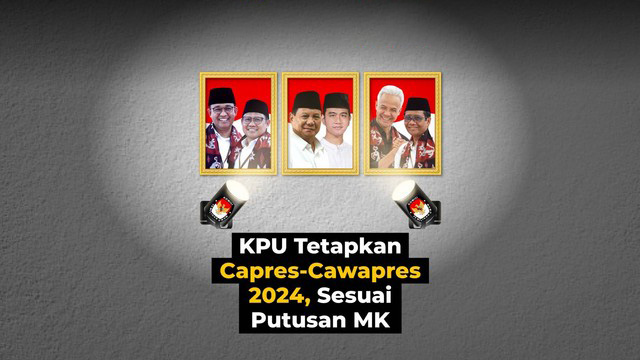How Bounty Systems Shape Games and Stories 26.10.2025
1. Introduction: The Role of Bounty Systems in Shaping Game Narratives and Player Engagement
Bounty systems are a fundamental mechanic in many modern games, serving as structured challenges that assign players specific targets or objectives in exchange for rewards. Essentially, they involve a player receiving a ‘bounty’—a mission to track down or eliminate a particular character or entity—often with a tangible reward upon completion. These systems are not merely about gameplay mechanics; they are powerful narrative tools that influence how stories unfold and how players engage with virtual worlds.
By examining bounty systems, we can understand their dual role: motivating players through rewards and shaping compelling narratives that deepen immersion. This article explores how bounty systems function as narrative devices, their theoretical underpinnings, and their impact across various game genres, with modern examples like ggf. Let’s delve into how these mechanisms continue to evolve and influence storytelling in gaming.
2. Theoretical Foundations of Bounty Systems in Game Design
a. Bounty systems as a form of player motivation and reward
At their core, bounty systems serve as extrinsic motivators, encouraging players to engage with specific challenges by offering tangible rewards such as in-game currency, items, or reputation points. According to behavioral psychology, these systems leverage operant conditioning, reinforcing desired behaviors through positive reinforcement. For example, in open-world RPGs, completing a bounty might yield valuable loot, incentivizing players to pursue dangerous objectives.
b. The relationship between bounty systems and narrative progression
Bounty missions often act as narrative catalysts, guiding players through story arcs or side quests that deepen the game world’s lore. They create a sense of purpose, making the game world feel alive and reactive. These systems can introduce moral dilemmas, influence character development, and lead to branching storylines, thereby enhancing player agency and immersion.
c. Comparing bounty systems with other reward mechanisms
| Reward Mechanism | Strengths | Weaknesses |
|---|---|---|
| Bounty Systems | Directed goals, narrative integration, motivation | Potentially repetitive, risk of focusing solely on rewards |
| Experience Points (XP) | Encourages continuous play, skill development | Less narrative-driven, may promote grind |
| Loot Drops | Provides tangible in-game items, excitement | Randomness can cause frustration, less control |
3. Bounty Systems as Narrative Devices
a. How bounty missions create story arcs and character motivations
Bounty missions often serve as narrative threads that propel the story forward. They introduce characters, factions, or enemies, each with their own motives, creating complex motivations for players. For instance, a bounty targeting a notorious outlaw can develop into a larger questline, revealing the character’s backstory and intertwining it with the broader game world.
b. Examples of bounty-driven storytelling in popular games
Games like Red Dead Redemption 2 exemplify bounty systems shaping storytelling—tracking outlaws not only advances the plot but also fleshes out the world’s socio-political landscape. Similarly, in The Witcher 3, contracts act as bounty missions that explore moral ambiguity, enriching the narrative with player choices that influence outcomes.
c. Impact of bounty systems on player immersion and world-building
Bounty systems deepen immersion by making the game world feel dynamic and reactive. When players see bounty boards or hear rumors about targets, it reinforces the feeling of participating in a living, breathing universe. This encourages exploration, social interaction, and engagement with lore, fostering a stronger emotional connection to the story.
4. Case Study: Bullets And Bounty – A Modern Illustration
a. Overview of Bullets And Bounty’s bounty mechanics
In Bullets And Bounty, bounty mechanics are central to gameplay, involving players taking on contracts that require tracking down opponents or completing specific objectives within a competitive environment. The game dynamically assigns bounties based on player behavior and in-game events, fostering a living ecosystem of challenges and rivalries.
b. How its bounty system enhances gameplay and narrative depth
The bounty system in Bullets And Bounty elevates gameplay by adding layers of strategy—players must decide whether to pursue high-value targets risking retaliation or focus on safer objectives. Narratively, it creates a sense of ongoing conflict and reputation-building, where each bounty completed shapes the player’s identity and standing within the game world.
c. Lessons learned from its implementation and player reception
The success of this bounty system lies in its adaptability and integration with game mechanics, demonstrating that well-designed reward structures can significantly boost engagement. Player feedback highlights the importance of balancing bounty difficulty and reward, ensuring that challenges remain motivating without becoming frustrating. Such insights are valuable for developers aiming to craft compelling bounty-driven narratives.
5. Bounty Systems in Action: Exploring Different Game Genres
a. Open-world adventure and survival games (e.g., DayZ)
In survival games like DayZ, bounty mechanics often intertwine with core survival challenges—players might hunt or be hunted, with bounties serving as incentives for risky encounters. Bounty systems influence risk-reward calculations, where players balance the desire for high-value targets against the dangers of hostile environments and other players.
– Survival mechanics intertwined with bounty pursuits
- Looting and resource management become critical for bounty hunts
- Bounty targets can shift dynamically, increasing tension
b. Multiplayer and cooperative games (e.g., Sea of Thieves)
Faction-based bounty systems, such as those in Sea of Thieves, foster social interactions through rivalry and cooperation. Players form alliances or compete against each other to claim bounties, which often involve complex negotiations, betrayals, and strategic planning—highlighting the social dimension of bounty hunting.
– Social interactions and rivalry driven by bounty goals
- Faction reputations influence bounty availability and difficulty
- Cooperative strategies improve success rates, fostering teamwork
c. Narrative-driven shooters and westerns (e.g., Quentin Tarantino’s “The Hateful Eight” as an inspiration)
Thematic integration of bounty hunting provides a rich narrative context in genres like shooters or westerns. In The Hateful Eight, bounty themes underscore themes of trust, betrayal, and morality—elements that can be translated into game design to create tension and deepen storytelling.
– Thematic integration of bounty hunting in storytelling
- Bounty missions as moral dilemmas
- Character motivations linked to bounty targets
6. The Psychological and Social Impact of Bounty Systems
a. Incentivizing player behavior and decision-making
Bounty systems shape player choices—whether to pursue high-reward targets risking danger or to avoid conflict altogether. This influences strategic thinking, risk assessment, and moral decisions, often leading players to develop personalized playstyles.
b. Fostering competition and cooperation among players
By introducing targets with varying difficulty and rewards, bounty systems create a competitive environment that encourages rivalry. Simultaneously, cooperative bounty pursuits promote teamwork, especially in multiplayer settings, fostering social bonds and collective problem-solving.
c. Ethical considerations and narrative implications of bounty hunting
Bounty hunting raises questions about morality—what is justified, what constitutes justice? These themes can be woven into game narratives, prompting players to reflect on their decisions and their impact on the game world’s morality and lore.
7. Non-Obvious Dimensions of Bounty Systems
a. Bounty systems as tools for world consistency and lore expansion
Bounties can serve as storytelling devices that expand the game’s universe—introducing local legends, rivalries, and historical conflicts. They reinforce the game’s lore, making the world feel more authentic and layered.
b. Their influence on game economy and resource management
Bounty rewards impact in-game economies, affecting resource distribution and player wealth. Proper balance ensures that bounty systems motivate engagement without destabilizing economic progression.
c. Potential for emergent storytelling beyond the intended design
Players often create their own stories through bounty pursuits—rivalries, alliances, betrayals—that developers did not envision. These emergent narratives showcase the depth of bounty systems as catalysts for dynamic storytelling.
8. Future Trends and Innovations in Bounty-Based Gameplay
a. Dynamic and adaptive bounty systems
Future bounty systems are increasingly adaptive, adjusting difficulty and targets based on player skill, reputation, or behavior—creating personalized challenges that keep gameplay fresh and engaging.
b. Integration with emerging technologies (e.g., AI-driven bounties)
Artificial intelligence enables real-time, context-aware bounty assignments, enhancing realism and unpredictability. AI-driven NPCs can set bounties dynamically, making the game world feel more alive and reactive.
c. Cross-media storytelling opportunities
Bounty systems can extend beyond games—through transmedia storytelling, such as real-world events, social media challenges, or augmented reality, broadening engagement and narrative depth.
9. Conclusion: How Bounty Systems Continue to Shape the Evolution of Games and Stories
Throughout this exploration, it is evident that bounty systems are more than just gameplay mechanics—they are vital storytelling tools that motivate, immerse, and deepen players’ experiences. Modern examples like ggf demonstrate how well-designed bounty mechanics can elevate both gameplay and narrative complexity.
“Bounty systems are the connective tissue between gameplay mechanics and storytelling—transforming simple objectives into compelling narratives.”
As technology advances and player expectations grow, bounty mechanisms will continue to evolve, fostering richer worlds and more intricate stories. Balancing mechanics with narrative depth remains crucial, ensuring that bounty systems enhance rather than overshadow the immersive experience.


















